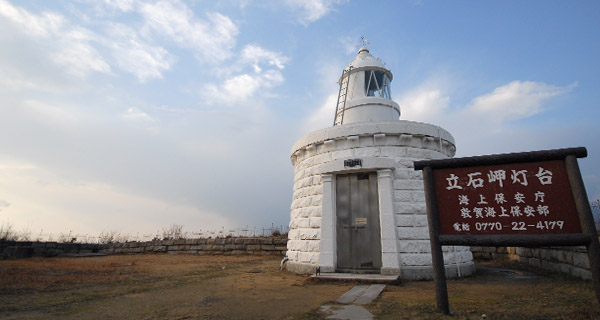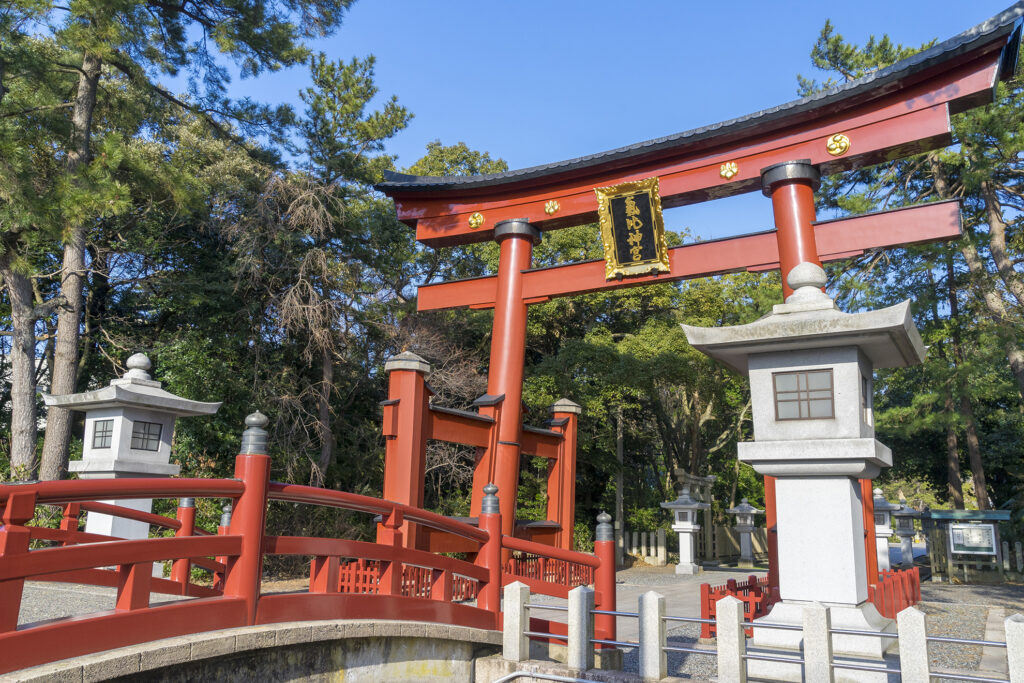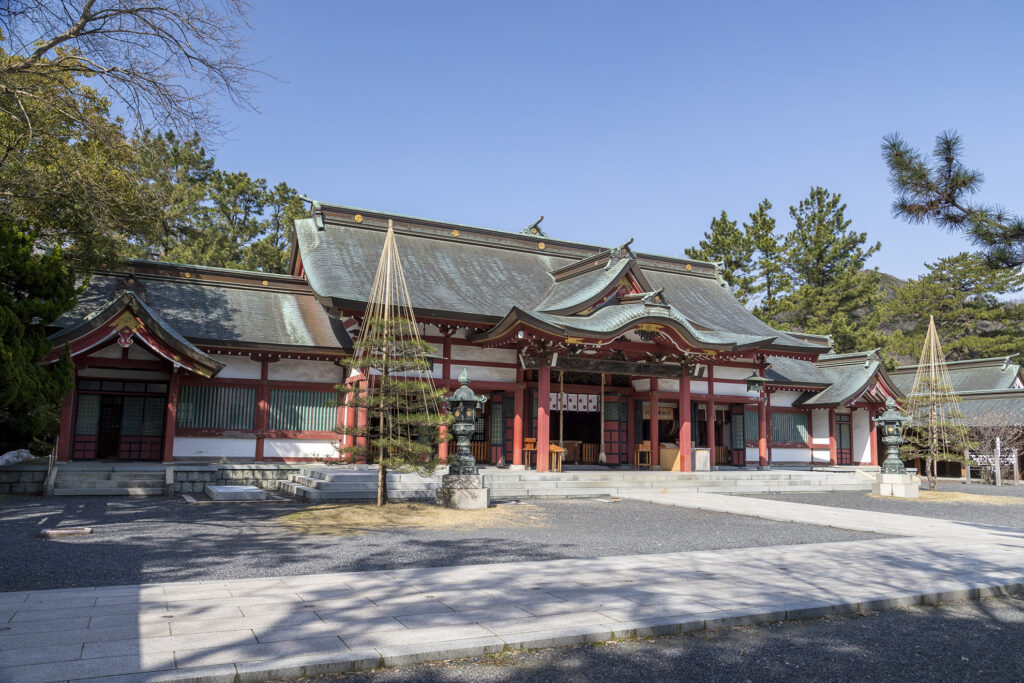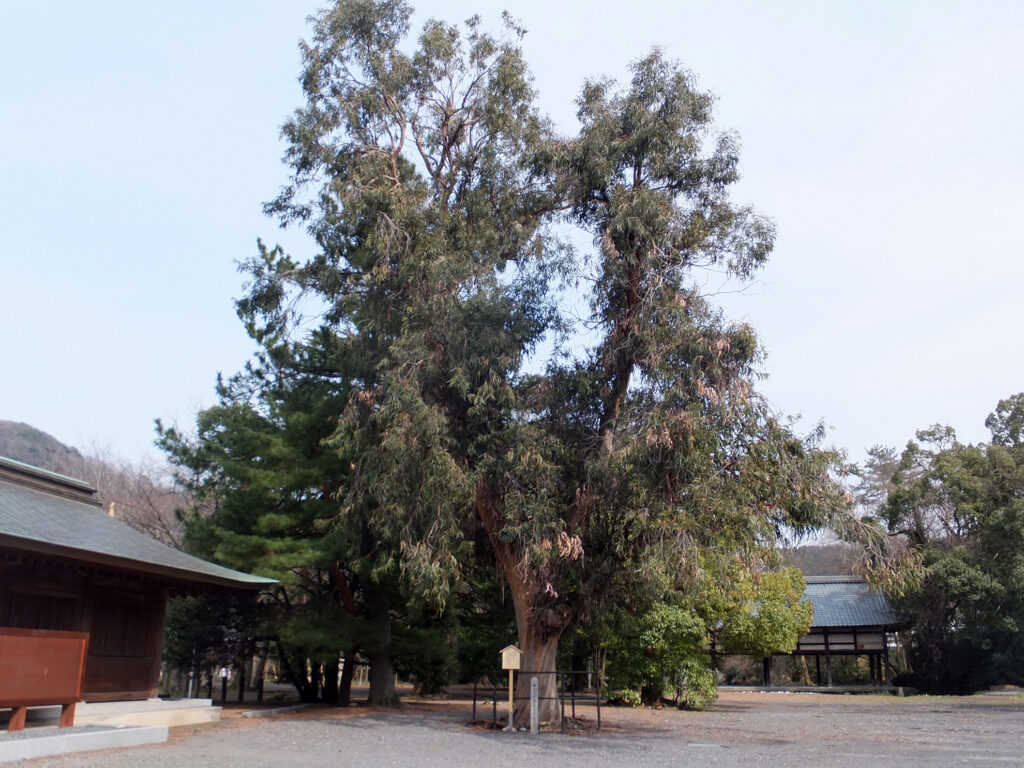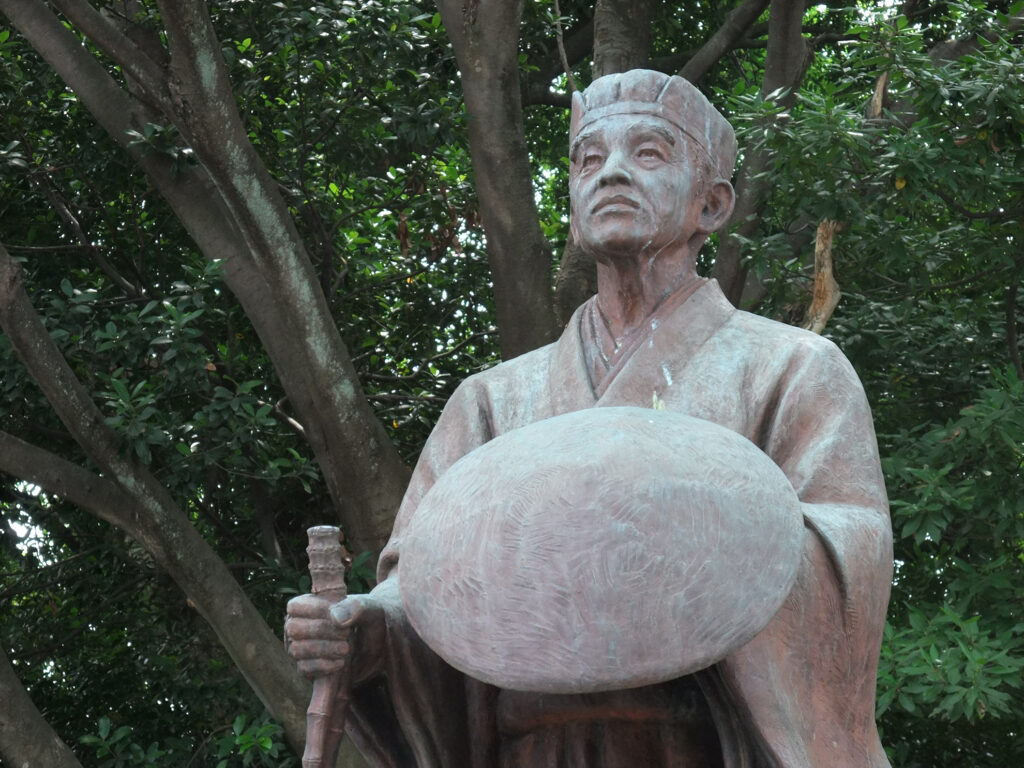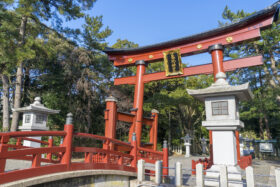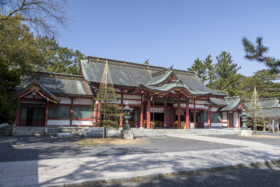
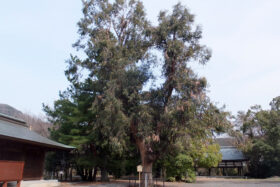
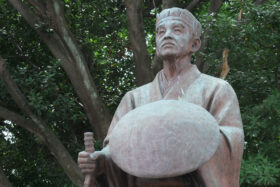
Kehi Jingu Shrine, the Chief Guardian Shrine of the Old Hokuriku-do Region
Kehi Jingu Shrine, known affectionately by the people of Tsuruga as “Kei-san,” is said to have been built in the year 702, and is the chief guardian shrine of the old Hokuriku-do region, dedicated to seven Shinto deities. The 11-meter-tall torii gate is registered as an Important Cultural Property, and is known as one of Japan’s three greatest wooden torii gates, alongside Nara’s Kasuga-taisha Shrine and Hiroshima’s Itsukushima Shrine.In September of 1689, Kehi Jingu Shrine was visited by the famous poet Matsuo Basho, and his visit is still commemorated with a statue and a stone monument inscribed with his poetry. Stone poetry monuments like this are also located throughout Tsuruga; see if you can find some of them.
Tsunuga Shrine, Dedicated to the Legendary Figure Tsuruga is Named For
This shrine is dedicated to Prince Tsunuga Arashito, who traveled from his home overseas to Tsuruga during the legendary ancient reign of Emperor Sujin. According to the Nihon Shoki (the Chronicles of Japan), Prince Tsunuga Arashito had horns coming from his head; the area was named “Tsunuga,” written, literally, “horn-deer,” and over time it became “Tsuruga.”
Chomeisui Spring, Flowing with Pure Water and Mystical Energy
This sacred spring began to flow in the year 702, as a Shinto shrine was being built here. The water is said to bring long, healthy life, and the spring remains beloved for its natural beauty, thirteen centuries later.
Kehi Romance Fortunes and Matchmaking O-mamori Charms
Kehi Jingu Shrine, already known for its wide variety of o-mamori charms, is home to a particularly unique form of matchmaking o-mamori, shaped like the top and bottom halves of a clamshell, as well as fortune-telling paper strips that predict one’s fortune in love. The old-fashioned words of the love poems lend them a timeless romance.
O-taue Rice-planting Festival (held in June)
The O-taue Rice-planting Festival is held in an actual rice field located in front of the main shrine of Kehi Jingu Shrine, and features a mock-rice-planting ceremony. The master of the rice field and women in traditional farming costumes sing a rice-planting song, as a prayer for a bumper crop.
Sosansai Festival (held in July)
One of the deities of Kehi Jingu Shrine, Emperor Chuai, crosses the ocean once every year, on July 22nd, to see his empress and the deity of Jogu Shrine, Empress Consort Jingu. A romantic festival highly reminiscent of the story of Orihime and Hikoboshi of the Tanabata festival.
Tsuruga Festival (held in September)
The greatest event in the Hokuriku region: the people of Tsuruga carry omikoshi shrines and parade six magnificent floats around the city. The festival plaza, carnival parade, and nighttime folk dances are all well worth seeing, or simply enjoy the atmosphere of a city celebrating one big festival.
This shrine is dedicated to Prince Tsunuga Arashito, who traveled from his home overseas to Tsuruga during the legendary ancient reign of Emperor Sujin. According to the Nihon Shoki (the Chronicles of Japan), Prince Tsunuga Arashito had horns coming from his head; the area was named “Tsunuga,” written, literally, “horn-deer,” and over time it became “Tsuruga.”
Chomeisui Spring, Flowing with Pure Water and Mystical Energy
This sacred spring began to flow in the year 702, as a Shinto shrine was being built here. The water is said to bring long, healthy life, and the spring remains beloved for its natural beauty, thirteen centuries later.
Kehi Romance Fortunes and Matchmaking O-mamori Charms
Kehi Jingu Shrine, already known for its wide variety of o-mamori charms, is home to a particularly unique form of matchmaking o-mamori, shaped like the top and bottom halves of a clamshell, as well as fortune-telling paper strips that predict one’s fortune in love. The old-fashioned words of the love poems lend them a timeless romance.
O-taue Rice-planting Festival (held in June)
The O-taue Rice-planting Festival is held in an actual rice field located in front of the main shrine of Kehi Jingu Shrine, and features a mock-rice-planting ceremony. The master of the rice field and women in traditional farming costumes sing a rice-planting song, as a prayer for a bumper crop.
Sosansai Festival (held in July)
One of the deities of Kehi Jingu Shrine, Emperor Chuai, crosses the ocean once every year, on July 22nd, to see his empress and the deity of Jogu Shrine, Empress Consort Jingu. A romantic festival highly reminiscent of the story of Orihime and Hikoboshi of the Tanabata festival.
Tsuruga Festival (held in September)
The greatest event in the Hokuriku region: the people of Tsuruga carry omikoshi shrines and parade six magnificent floats around the city. The festival plaza, carnival parade, and nighttime folk dances are all well worth seeing, or simply enjoy the atmosphere of a city celebrating one big festival.
- Traffic access
-
By car: Approx. 10 min. from Tsuruga IC on the Hokuriku Expressway
By bus: Take the Tsuruga Excursion Line Bus (Tourism Route) from JR Tsuruga Station to Kehi Jingu bus stop (approx. 3 min.) - Address
- 11-68 Akebono-cho, Tsuruga City, Fukui Prefecture
- Parking
- Free parking available (approx. 10 spaces next to the torii gate in front, and approx. 50 car spaces/10 bus spaces east of the main shrine building)
- Hours
- 6:00 a.m. to 5:00 p.m.


